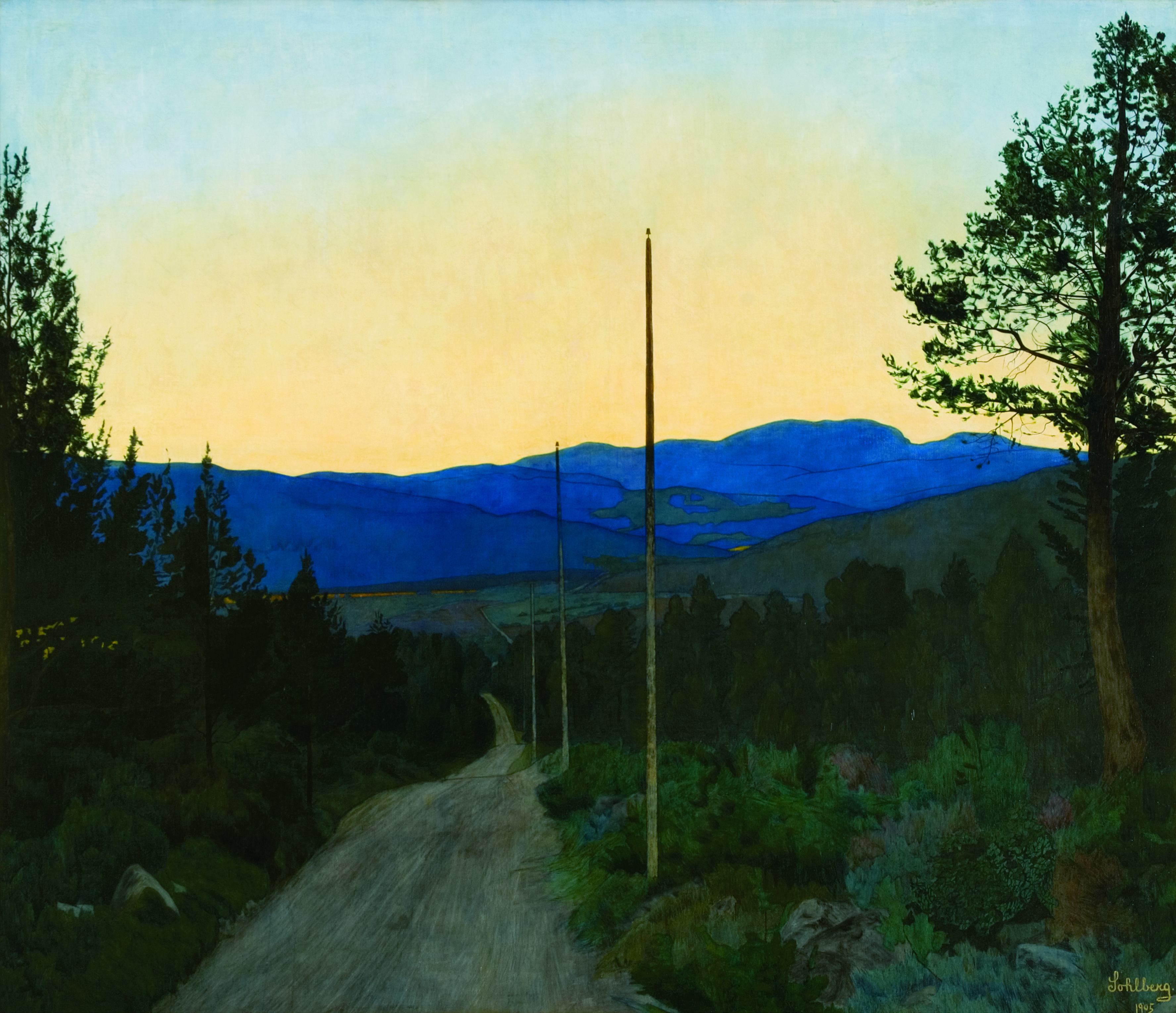“Where does this road go in the twilight? It is as if the sorrow in it, gives itself to eternity” wrote Norwegian poet Gunvor Hofmo in response to Harald Sohlberg’s painting. The road in question is passing Gullikstad towards Trondheim in Norway, and captured Sohlberg’s imagination for many reasons. He relates the road to our path through life, as the trees standing tall on either side of the composition acknowledge the eternal cycle of life and death. The encroachment of progress, and human interference is present in the telegraph poles marching across the landscape—but they are absent of wires. In the middle distance our eye is drawn to the orange strip highlighting the reflection of the setting sun on water.
Like his peer, Edvard Munch, Sohlberg strongly denied the influence of other contemporary artists. Born in Kristiania (modern-day Oslo) in 1869, he originally trained as a decorative painter, before studying for short periods under fellow Norwegian artists including Harriet Backer, Erik Werenskiold, and Eilif Peterssen. Sohlberg then went on to attend the art school of Kristian Zahrtmann in Copenhagen, where he encountered the work of Paul Gauguin and other Symbolist and Synthetist artists.
You can see this painting on display at Dulwich Picture Gallery in London until 2 June 2019 as part of Harald Sohlberg: Painting Norway, celebrating 150 years since the artist’s birth.
P.S. Joanna from DailyArt Magazine has already visited the exhibition! Read about her impressions here.
Image: The Country Road, The Museum of Fine Arts, Houston


 Harald Sohlberg
Harald Sohlberg